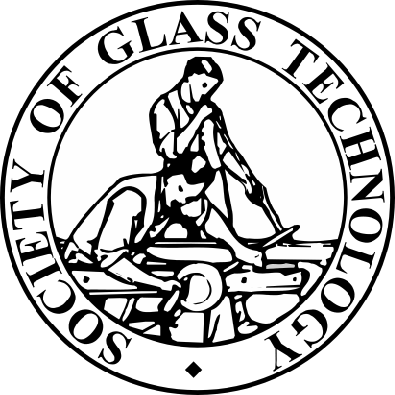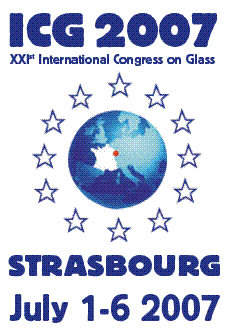Courses, Conferences and Papers
COURSES ATTENDED
Workshop in Computational Methods for the Exploitation of Vibrational Spectra
27th - 28th September 2006
The workshop introduces inelastic neutron scattering, infrared and Raman users to computational techniques for modelling vibrational data. These programs include Gaussian, DMol and Castep.
Visit to Coe College, Cedar Rapids, Iowa, USA
16th - 30th July 2006
I was awarded £400 by ASSEC to travel to Coe to make use of the high speed twin roller quencher, which has been utilised to make and extend several of my glass forming systems. In addition to this I also presented my work at the Iowa glass conference (see below) and made use of the Jasco NRS-3100 microRaman spectrophotometer, which operates much closer to the Raman line, than the Warwick setup, to measure the Pb-O vibrations in my lead aluminate glasses.
Windermere 4 Gradschool
3rd - 7th July 2006
A 4.5 day course to develop the transferable skills aquired during my PhD. The course included half a day of outdoor activities, CV and interview advice, and insights into various job sectors. Whilst doing this crucial team working skills are developed and the transferability of PhD skills to other job areas is highlighted.
5th - 15th September 2005
The Oxford School on Neutron Scattering consists of two weeks of lectures and tutorials covering all aspects of the theory and practice of neutron diffraction and spectroscopy, given by international experts. Techniques and applications at both steady state and pulsed neutron sources are covered, and the school gives the opportunity to hear about some of the exciting new research being carried out in neutron scattering.
19th - 24th June 2005
I took part in the "chemistry and materials" part of the training course, which gave a practical insight into powder-, single crystal-, and non-crystalline- diffraction and spectroscopy. As well as inelastic- and quasi- elastic neutron scattering. I gained experience on the following ISIS machines: GEM, SXD, TOSCA and OSIRIS.
In addition to these, I have also been on several courses organised by the University of Warwick to develop my transferable skills. These include:
Adding News and Events Content in Site Builder 2
Using Styles and Templates in Word
Word for Long Documents
Using Mind and Concept mapping tools
Preparing for and Surviving your Viva
CONFERENCES ATTENDED
Derby 5th-7th September 2007
I presented a talk entitled "α-TeO2 and sodium tellurite glasses" at the New Scientists Forum at the SGT conference. The talk was a futherence of the work presented at the ICG in July, and discussed the extraction of alkali - oxygen correlations fro tellurite glasses using the difference technique, and then compared the short range order present in glasses and the related crystal phases. I was awarded the Paul award for best talk.
Strasbourg 1st-6th July 2007
I presented a poster entitled "A study of the structure of 20 Na2O.80TeO2 glass and it's related crystal phases." Which was taken from part of the preliminary work carried out for a major results chapter in my thesis
International Workshop on Current Challenges in Glass and Liquid Science
Abingdon, 10th - 12th January 2007
I presented a poster entitled "Neutron Diffraction Studies of Tellurium Borate Glasses" detailing some of the preliminary analysis and problems with data aquired on the GEM diffractometer at ISIS.
Disordered user group meeting (ISIS)
Rutherford Appleton Laboratory, 31st October - 1st November 2006
I attended my second disordered user group meeting.
Prague, 18th - 22nd September 2006
Coe College, 25th July 2006
Neutron and Muon Users Meeting and the New Perspectives in Neutron and Muon Science workshop
University of Warwick, 29th - 31st March 2006
I presented a talk at the new perspectives meeting on some of the crystallographic work which had arisen from my study of the lead aluminate glass system. The talk was entitled "A neutron diffraction redetermination of the structure of crystalline Pb9Al8O21."
Disordered user group meeting (ISIS)
Abingdon, 29th-30th June 2005
I presented a talk entitled "The structural role of lone pair cations in lead aluminate glasses" detailing some of the preliminary analysis carried out on the data aquired on the GEM diffractometer at ISIS.
GLAss and AMORphous materials conference (Glamor)
Cambridge, 11th - 13th April 2005
I presented a poster entitled "The Structural Role of Lone Pair Ions in the Sodium Tellurite System"
CLRC Research networks meeting
ISIS, date
PAPERS IN PUBLICATION
Local structure and disorder in crystalline Pb9Al8O21 by neutron diffraction and 27Al NMR.
A.C. Hannon, E.R. Barney, D. Holland and K. Knight
Submitted to Journal of Physical Chemistry B
Abstract
Structural studies of lead aluminate glasses.
E.R. Barney, A.C. Hannon, D. Holland, D. Winslow, B. Rijal, M. Affatigato and S.A. Feller
J. Non-Cryst. Solids 353 (18-21): 1741
Abstract
Lead aluminate melts were quenched rapidly with a roller quencher and bulk glasses were formed over a composition range from 72.5 to 80.0 mol% PbO. Pulsed neutron diffraction, 27Al MAS NMR and Raman spectroscopy were used to study the structure of a series of these glasses. The results show that in the glasses the aluminium is four coordinated by oxygen across the compositional range, with a bond length of about 1.76 Å. The Pb–O peak in the neutron correlation function is asymmetric, and it can be modelled in terms of two bond lengths of 2.25 Å and 2.47 Å , with the majority of the coordination at the shorter distance. There is evidence that most or all of the lead ions are on asymmetric sites, coordinated by three oxygens in a trigonal pyramid arrangement. Both the neutron diffraction and Raman results indicate that the Pb–O bond lengths become shorter with increasing lead content.





